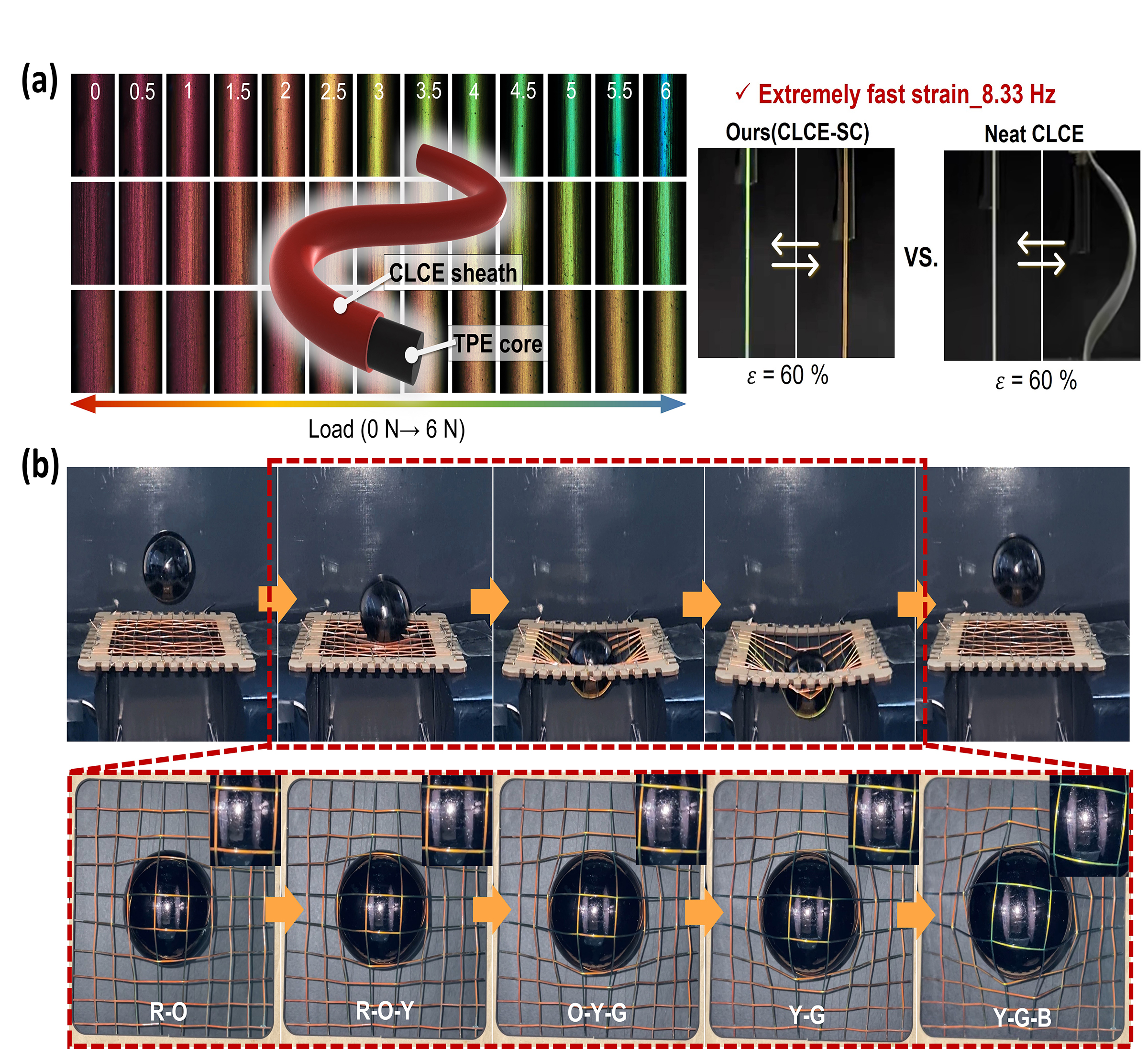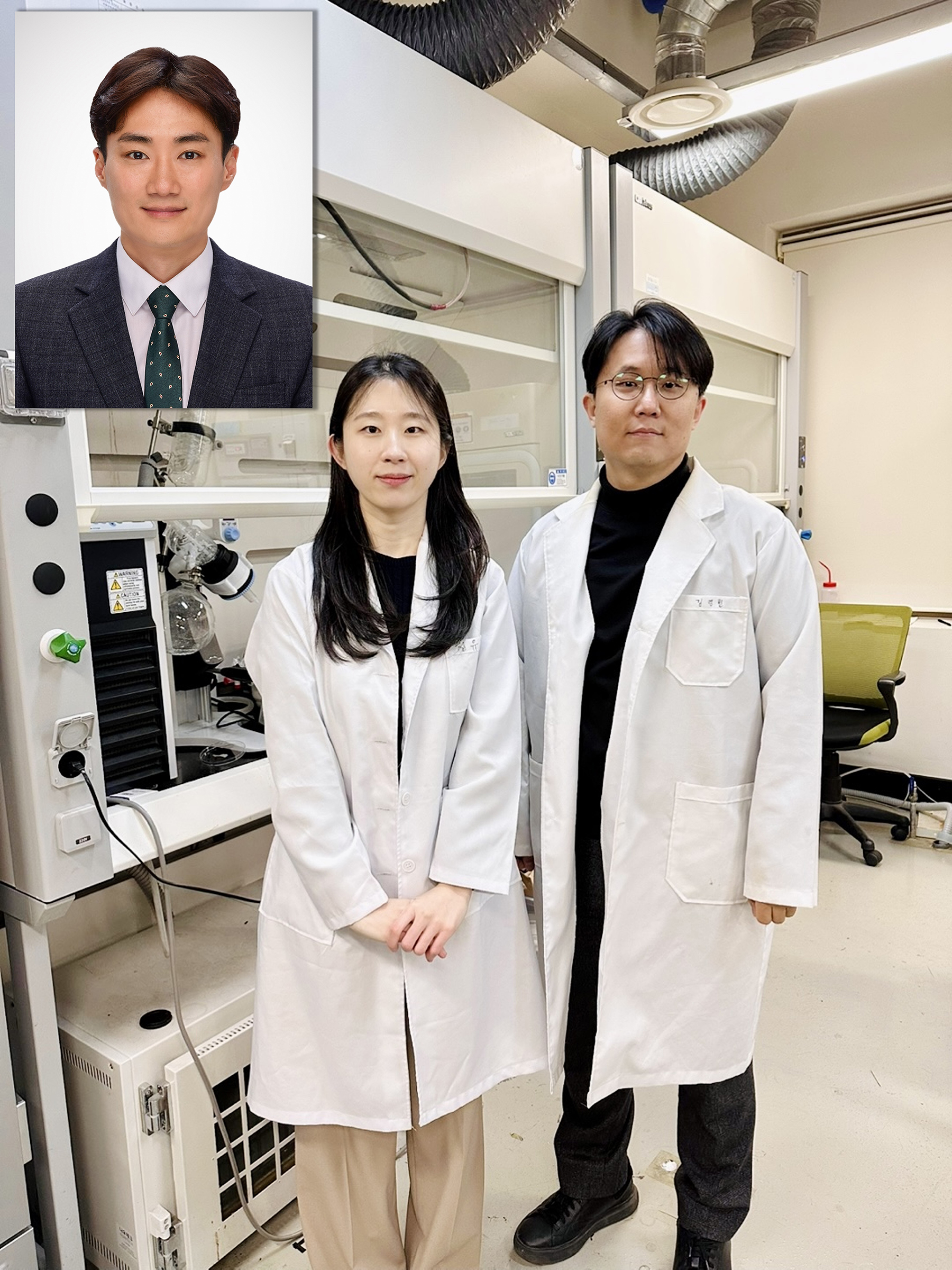연구/산학
PKNU Research 1000
| Kim Dae-seok | Advanced Fiber Material Development Research | |||
| 작성자 | 대외홍보센터 | 작성일 | 2025-03-25 |
| 조회수 | 42 | ||
| Kim Dae-seok | Advanced Fiber Material Development Research | |||||
 |
대외홍보센터 |  |
2025-03-25 |  |
42 |
Pukyong National University and Hanyang University Develop Cutting-Edge Fabric Material that ‘Changes Color When Stretched‘
- Professor Kim Dae-seok's team accelerates the practical application of mechanochromic fabric materials usable as visual sensors
- Paper published in the Nature sister journal <Nature Communications>

A cutting-edge fabric material that changes color when stretched and possesses high recovery resilience has been developed, drawing attention.
The team, led by Professor Kim Dae-seok (Department of Polymer Engineering) from Pukyong National University, along with Master's student Jeong Yoo-jin, and Professor Eom Yeong-ho (Department of Organic Nano Engineering) from Hanyang University, developed the mechanochromic fabric based on Cholesteric Liquid Crystal Elastomer (CLCE).
The elastomer material, characterized by its twisted nanostructure, exhibits mechanochromic properties where the nanostructure changes in response to external mechanical forces, causing the reflected color to change. Mechanochromism is visually immediate, offering high convenience and the ability to be used semi-permanently without power, making it a valuable candidate for use as a power-free visual sensor across various industries.
In particular, among mechanochromic materials, CLCE has attracted attention for its ability to produce vivid colors due to its precise self-assembled nanostructures. However, it has been limited in practical applications due to its vulnerability to strong external forces or rapid deformation.
To overcome these limitations, Professor Kim Dae-seok's research team succeeded in developing a CLCE-based mechanochromic fiber with ultra-strength and high recovery elasticity by using a process that meticulously coats CLCE onto thermoplastic elastomer (TPE) fiber materials, which have strong physical properties.
The team synthesized the precursor of CLCE, which forms a twisted nanostructure, and then uniformly coated it onto TPE fibers through pressure injection, elevating the material’s physical and optical properties to a practical level.
The developed color-changing fiber exhibited high tensile-recovery strength, remaining resilient without elongation within a tensile range of 60-100% that repeats 8 times per second. The research team anticipates that this fiber, which was previously difficult to achieve with conventional CLCE materials, will be immediately applicable in high-speed environments such as sportswear, mobility, and aerospace industries.
Additionally, the research team demonstrated that by adding carbon nanofillers to TPE, they could adjust the material properties to create a variety of CLCE mechanochromic fibers with tailored properties.
This research was published in the February issue of the prestigious journal <Nature Communications>, a sister journal of Nature, under the title ‘Ultra tough and high resilience mechanochromic fibres for real world stress detection.’
Professor Kim Dae-seok commented, "This study is significant in that it maximized the commercial potential by developing a composite material that combines with existing commercially viable materials, unlocking new properties." He further emphasized, "Just as weak CLCE, like an Iron Man suit, gains powerful strength by being integrated with TPE, I will continue to conduct research focused on creating new functionalities by combining materials that have excellent properties but weak mechanical strength."
